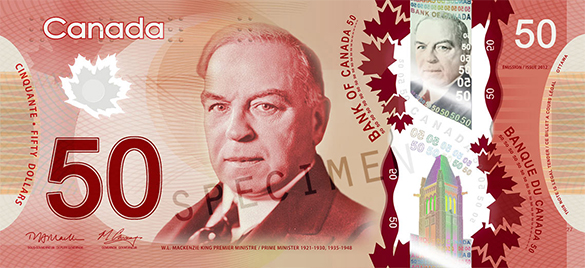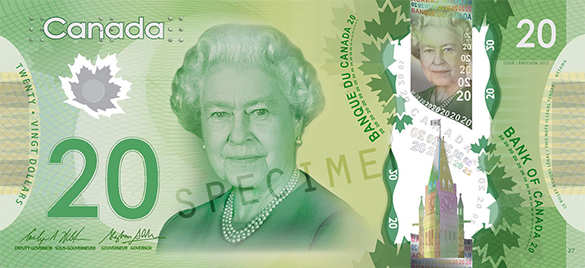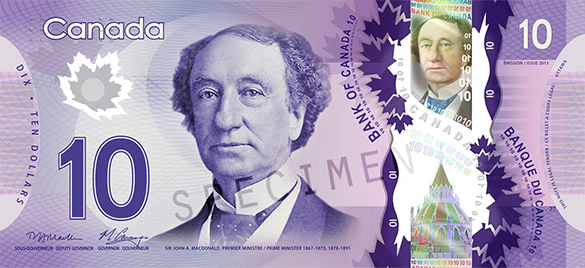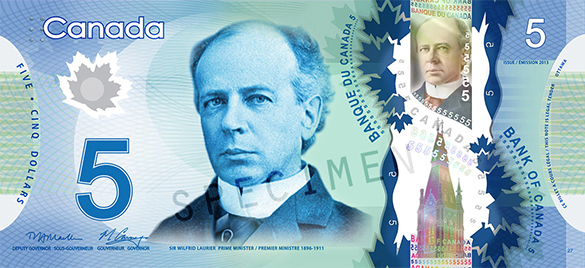Minds On
Exploring bills
As a class or on your own, explore the question: what are bills?

KWL chart
Now that we have covered the idea of what bills are we are going to take that inquiry and complete a KWL chart. In a KWL chart, we write about what we know (K), what we want to know (W), and what we have learned (L).
You will share one thought for both the 'K' and 'W' sections. You may record your ideas in the following chart or another method of your choice. We will revisit this at the end of the learning activity to fill out the 'L' section.
You can complete the KWL Chart in your notebook or using the following fillable and printable document.
| What are Bills? | ||
|---|---|---|
|
K What I know |
W What I want to know |
L What I learned |
Action
Sorting bills
Now that you are starting to understand a little bit more about bills you are going to work on sorting them into different groups.
Work with a partner or on your own to explore different ways you can sort bills. For example: by picture, value, colour. This can be done in a notebook, virtual white board or with paper imitation money.
 Description
Description
5 Canadian bills from least to greatest; The 5 dollar bill is blue. The 10 dollar bill is purple. The 20 dollar bill is green. The 50 dollar bill is red. The 100 dollar bill is brown.
Press the ‘More details about Canadian bills’ button to know more.
More details about Canadian bills

Name: 50 dollar note
Worth: 50 dollars
Image (front): Former Prime Minister William Lyon Mackenzie King on one side and CCGS Amundsen.
Image (rear): An icebreaker ship used in the Canadian Artic on the reverse.
Colour: Red

Name: 20 dollar note
Worth: 20 dollars
Image (front): Queen Elizabeth II on one side.
Image (rear): The Canadian National Vimy Memorial, which is a monument in France, on the reverse.
Colour: Green

Name: 10 dollar note
Worth: 10 dollars
Image (front): Viola Desmond, a successful Black Nova Scotian businesswoman and civil rights activist on one side.
Image (rear): The Canadian Museum for Human Rights, located in Winnipeg, Manitoba, on the reverse.
Colour: Purple

Name: 5 dollar note
Worth: 5 dollars
Image (front): Wilfrid Laurier the first French-Canadian Prime Minister on one side and the Canadarm.
Image (rear): A robotic arm designed in Canada and used on NASA missions between 1981 and 2011, on the reverse.
Colour: Blue
Exploring value
Now that you have spent some time exploring Canadian bills up to $50.00 we are going to expand our understanding of value.
Using manipulatives (paper bills or the interactive below) you are going to work out the following problems.
Record your ideas on the computer, on paper, or in a recording.
- Using skip counting, how many 5-dollar bills do you need to make $50.00?
- Using skip counting, how many 10-dollar bills do you need to make $50.00?
- Using skip counting, how many 20-dollar bills do you need to make $50.00?
- What other bills may you need?
You can use the following interactive to count bills and answer the questions above. An adult will show you how to use it and then you can try using it yourself.
Consolidation
Deepening your understanding
KWL chart discussion
You are now going to revisit the KWL chart and review the K and W sections. It is now time to add in the L section.
What is one thing that you learned through this lesson?
Add it to the chart discussed in the Minds On section. If you want to add in more than one item, you can.
Brainstorm
Your turn!

You are going to display your understanding by completing one more question independently.
Be sure to record your ideas in an audio recording, on paper, on the computer or using an organizer.
Using bills, how many different ways can you have $40.00?
Reflection
How do you feel about what you have learned in this activity? Which of the next four sentences best matches how you are feeling about your learning? Press the button that is beside this sentence.
I feel...
Now, record your ideas about your feelings using a voice recorder, speech-to-text, or writing tool.
